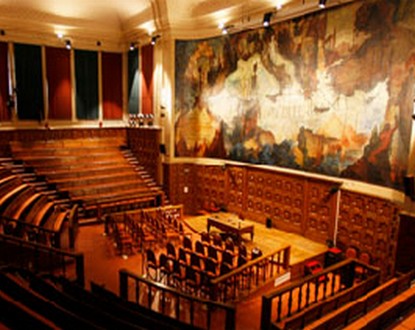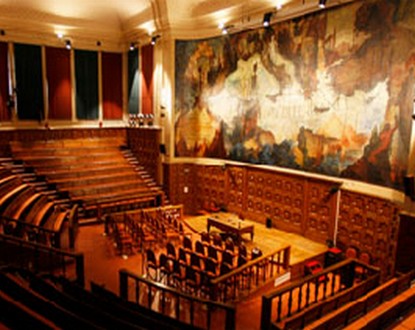A very interesting conference on the Arab World Institute at the CUM featured Dominique Baudis, its president, as speaker.
It was an opportunity to talk about this internationally renowned institution which, for a few decades, has been a beacon of Arab culture in Paris.

With more than a million visitors per year, the IMA has today become a major player in the French and international cultural scene, a true “cultural bridge” between France and the Arab world.
The Arab World Institute (abbreviation IMA), is a Parisian cultural institute dedicated to the Arab world. It is located at the heart of historic Paris, in the 5th arrondissement, on Mohammed-V square between the quai Saint-Bernard and the Jussieu campus.
The building was designed by a group of architects (Jean Nouvel and Architecture-Studio) who attempted a synthesis between Arab and Western cultures.
The construction of this building, although part of the large-scale public works policy desired by François Mitterrand, was decided under the seven-year term of Valéry Giscard d’Estaing with a view to improving diplomatic relations between France and Arab countries.
It was inaugurated on November 30, 1987, by President Mitterrand.
The Institute is a member of the Forum of Foreign Cultural Institutes in Paris and of Broadcast and Production Exchanges (EPRA). It is sometimes nicknamed the “Arab Beaubourg,” in reference to the Beaubourg center.
Foundation
The Institute is supported by a foundation jointly created by the French Republic and the following states, all members of the Arab League: Algeria, Saudi Arabia, Bahrain, Djibouti, the United Arab Emirates, Iraq, Jordan, Kuwait, Lebanon, Morocco, Mauritania, Oman, Qatar, Somalia, Sudan, Syria, Tunisia, Yemen (at the time the People’s Democratic Republic of Yemen and the Yemen Arab Republic).
The foundation act was signed by these states on February 28, 1980. The statutes were approved by the ambassadors of these states on June 23, 1980.
These founding states were later joined by the last three members of the Arab League that were not yet part of it: Libya in 1988, and Egypt and Palestine in 1989.
On October 14, 1980, the foundation was also recognized of public utility by a decree from the Minister of the Interior, Christian Bonnet, and the Minister of Foreign Affairs, Jean François-Poncet.
This form of establishment is unique, described as sui generis.
Architecture
Detail of the moucharabiehs on the south façade The north façade faces historic Paris, symbolizing the relationship with the old city, present in an allusive way on the façade.
Designed by Jean Nouvel, the south façade takes on the historical themes of Arab geometry as it is composed of 240 moucharabiehs.
These are equipped with diaphragms that can open and close; this was initially supposed to be done depending on the sunlight, to function as a thermal regulator, but the photoelectric cells responsible for operating this system have shown malfunctions, so the opening and closing now occur with every hour change, adopting a more touristic function.
The building received the Équerre d’Argent award in 1987, as well as one of the Aga Khan Awards for Architecture presented during its 4th cycle (1987-1989).



